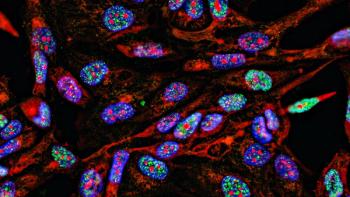
New Jersey Pharmaceutical Companies Report Hiring Difficulties
Trenton, NJ (May 18)-Pharmaceutical and medical technology companies in New Jersey have found a striking disparity between six high-demand occupations and the number of qualified workers to fill those positions, according to a report issued by the HealthCare Institute of New Jersey.
Trenton, NJ (May 18)-Pharmaceutical and medical technology companies in New Jersey have found a striking disparity between six high-demand occupations and the number of qualified workers to fill those positions, according to a report issued by the HealthCare Institute of New Jersey (HINJ,
Prepared by Rutgers University’s John J. Heldrich Center for Workforce Development, the report, “The Workforce Needs of New Jersey’s Pharmaceutical and Medical Technology Industry,” was based on an online survey of two-thirds of HINJ member companies in spring 2006. These member companies represent 38,000 of the 60,000 jobs at HINJ member companies.
The occupations found to be in high demand are: product and marketing managers, clinical scientists, regulatory affairs managers, medical doctors, biostatisticians, and engineers. As of 2006, only one quarter of jobs in New Jersey were in basic research and clinical development whereas half of all jobs in the sector were in corporate administration, marketing, and sales.
In the technical operations/manufacturing category, which accounts for 15% of the current related workforce in the state, 38% of open positions in this area are attributed to growth. According to the report, six occupations in this category, along with quality management, have moderate levels of employment, including mechanical engineers, manufacturing engineers, and quality control managers.
Adding to the overall problem is the fact that there are low numbers of college students graduating with degrees, including graduate degrees, in the subjects needed to work in the pharmaceutical and medical technology industry.
“The good news is that the industry is continuing to produce high-skilled, high-wage jobs. The bad news is that we may not have enough people to fill them,” said Bob Franks, president of HINJ, in a HINJ news release.
To bridge the gap, the report urges institutions of higher learning to encourage students toward math and science disciplines. “Our state’s pharmaceutical and medical technology companies are struggling to find qualified workers in six key occupations,” said Dr. Carl Van Horn, professor and director of the Heldrich Center, in the release. “New Jersey’s colleges and universities must play a stronger, more focused role in preparing students for these career opportunities.”
To carry out this call the action, the HINJ report provides a detailed roadmap for industry-education partnerships that could benefit both students and HINJ companies, the latter of which has an estimated impact of $27 billion on New Jersey’s economy.
Reacting to the report, New Jersey’s Chief of Economic Growth Gary Rose stated that, “Bringing state government and higher education resources together was a priority outlined in the [governor’s] economic growth strategy and will be a focus going forward,” according to the release.
Added Commissioner David J. Socolow of the New Jersey Department of Labor and Workforce Development, “The report gives us insight into this industry’s employment needs. It reflects the areas that are being addressed through our $2.8 million investment in High-Growth Workforce Investment Grants over the past year, funding training partnerships with employers in the pharmaceutical and biotechnology sectors. We are also working to meet the Life Sciences industry’s workforce needs through a Workforce Innovations in Regional Economic Development (WIRED) initiative that recently received a $6.6 million federal grant for the Delaware Valley Innovation Network in southwestern New Jersey, southeastern Pennsylvania and Delaware.”
Fifteen of twenty-two HINJ companies responded to the survey, which targeted functional area, occupational title, educational level, and degree, while data were collected on numbers of employees, job openings, recent hires, and employment projections. Structured interviews were conducted with human resources managers as well. The full report may be found at
Newsletter
Get the essential updates shaping the future of pharma manufacturing and compliance—subscribe today to Pharmaceutical Technology and never miss a breakthrough.





